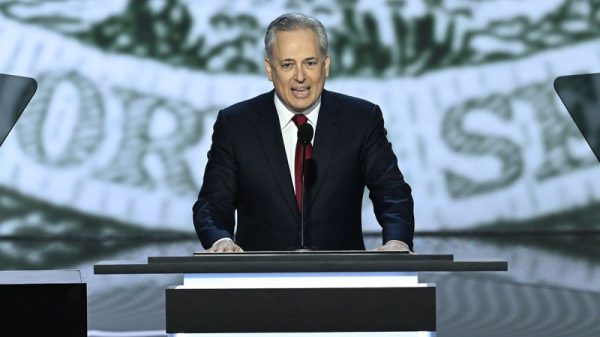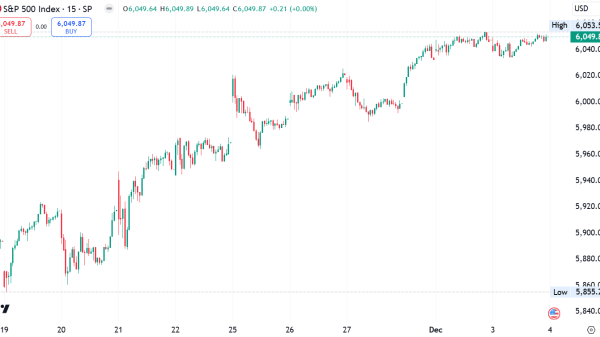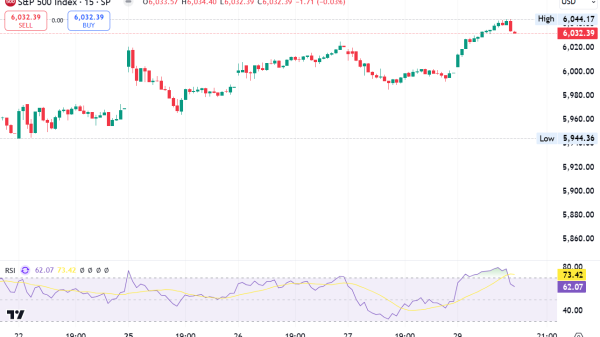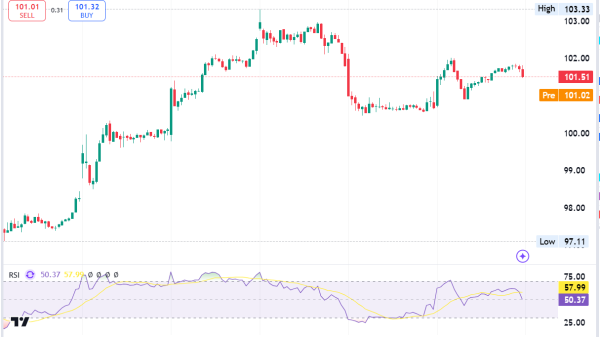The Dollar’s Decline: Examining Its Current Plunge in Depth
In a surprising turn of events, the dollar falls to its lowest level since August, marking a significant extension of its decline. This decline is accompanied by speculation that the Federal Reserve is approaching the conclusion of its rate-hike cycle, creating a ripple effect across global financial markets. Traders are closely monitoring the situation, with a 30% chance of a first Fed rate cut in March, spurred by recent cool inflation data. As the world watches, investors eagerly await the publication of the minutes from the last Fed rates meeting, seeking valuable insights into the policymakers’ thoughts.
The Dovish Fed Stance and Its Implications
“The accommodative stance of the Federal Reserve persists,” remarks Win Thin, the global head of currency strategy at Brown Brothers Harriman & Co. This sentiment sets the stage for ongoing downward pressure on US yields and, consequently, the dollar. The shift in the Fed’s stance has wider implications for global financial dynamics, influencing investment strategies and market sentiments.
Investors maintained a close watch on rising crude prices, driven by expectations of oil-producing countries implementing deeper supply cuts to stabilise the market.
Russia, a major oil exporter, experienced a 2.1% ruble strengthening, approaching a more-than-four-month high. Conversely, major oil importers Turkey and India saw marginal declines in their respective currencies.
Amid the ongoing conflict between Israel and Hamas, the Israeli shekel remained relatively unchanged. US and Israeli officials expressed optimism about nearing a deal to release hostages held in Gaza.
In eastern and central Europe, currencies like Hungary’s forint and Czech’s crown held steady against the euro. Poland’s zloty, however, strengthened by 0.4%.
Romania’s leu saw a slight 0.1% decrease ahead of the release of the local central bank’s minutes from its earlier monetary policy decision. Investors awaited insights from the bank’s discussions.
Global Market Reactions: Equities, Corporates, and Natural Gas
The repercussions of the dollar’s fall are evident across various sectors. US equity futures remain stable following a three-week stock rally that propelled the S&P 500 to an 11-week high. Corporate giants like Microsoft seize opportunities, with a 2% climb in pre-market trading driven by strategic leadership appointments.
However, the Stoxx Europe 600 index experiences fluctuations due to negative corporate news impacting shares. Bayer AG is confronted with a significant drop, surpassing 10%, following the suspension of a crucial drug trial and setbacks associated with its Roundup weed killer. Ashtead Group Plc and Julius Baer Group Ltd. also face challenges, with revenue forecast cuts and profit decline warnings, respectively.
In the energy sector, European natural gas prices surged due to geopolitical tensions involving a vessel seized in the Red Sea. This event renews concerns about the Israel-Hamas conflict affecting vital waterways, contributing to a 6.9% increase in benchmark futures on Monday.
Central Banks and Policy Shifts
The European Central Bank (ECB) is also in the spotlight as Governing Council member Pierre Wunsch suggests the possibility of raising borrowing costs. Wunsch’s comments reflect concerns about investor bets on monetary loosening undermining the institution’s policy stance. This could have far-reaching implications for the European financial landscape.
Political Landscape: Argentina’s Presidential Runoff
Shifting our focus to South America, Argentina witnessed significant political development as libertarian candidate Javier Milei defeated Economy Minister Sergio Massa in the presidential runoff. This unexpected outcome triggers rallies in Argentina’s bonds while emerging-market currencies and stocks experience gains.
Emerging Markets: Zambia’s Bond Woes and Asian Currency Dynamics
The fallout extends to emerging markets, with Zambia’s eurobonds plummeting as the country faces challenges implementing a restructuring pact with bondholders. This highlights the complexities of sovereign debt negotiations and their impact on global markets.
On the other side of the globe, the offshore yuan strengthens as the People’s Bank of China boosts its daily reference rate to the strongest since August. Southeast Asian currencies, including the Taiwanese dollar and South Korean won, rise amid prospects of a potential end to US interest rate hikes, exerting additional pressure on the dollar.
The recent developments paint a complex picture of the global economic landscape. The dollar’s fall is not just a numerical decline but a confluence of factors, including central bank strategies, geopolitical tensions, corporate challenges, and political shifts. As investors navigate this intricate terrain, they must carefully assess the best rate for dollars, consider opportunities to sell dollars, and stay attuned to the evolving dynamics of US dollars in the ever-changing financial ecosystem. The upcoming weeks will likely bring further clarity on the trajectory of the dollar buy back rate and its interconnected impact on global markets.
The post The Dollar’s Decline: Examining Its Current Plunge in Depth appeared first on FinanceBrokerage.


































